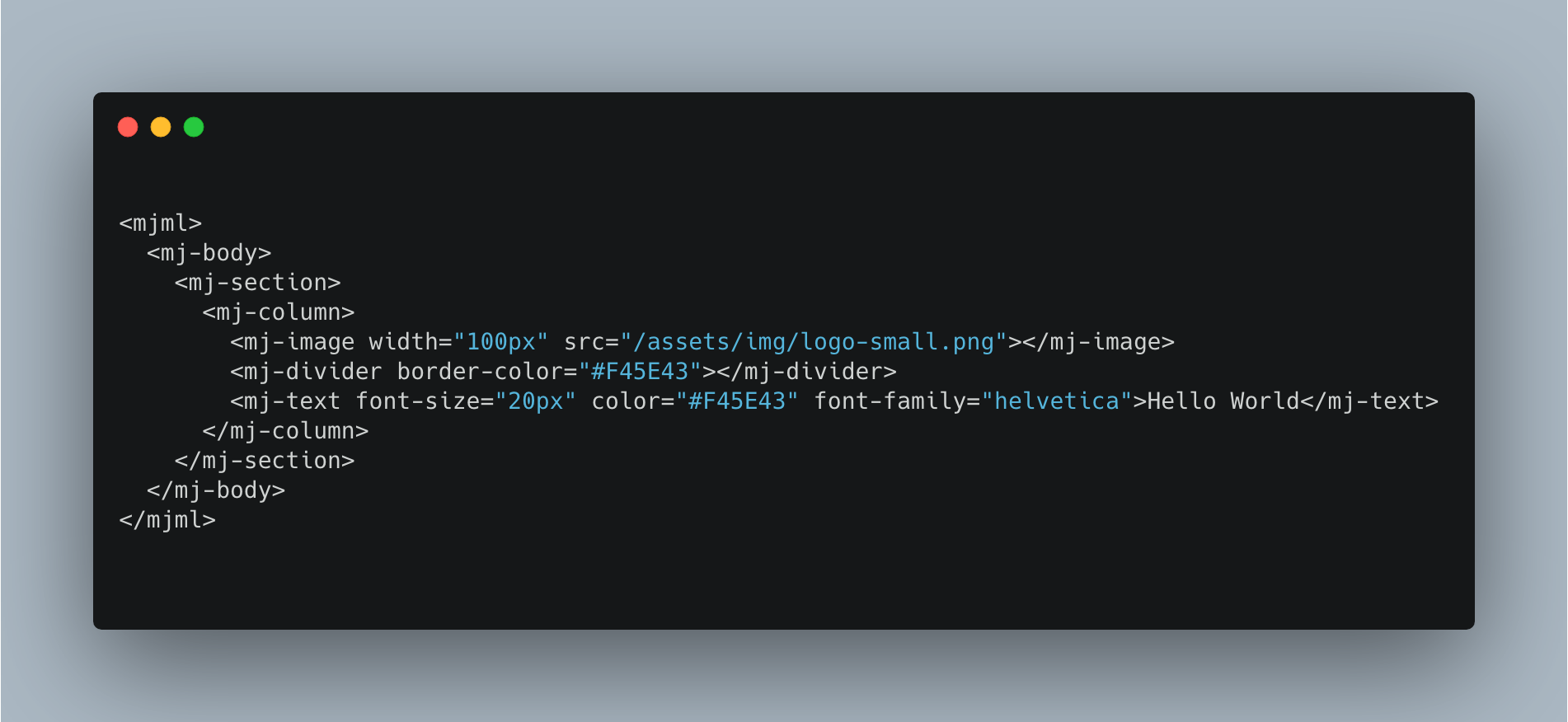

- #MJML SECTION HOW TO#
- #MJML SECTION INSTALL#
- #MJML SECTION ANDROID#
- #MJML SECTION CODE#
- #MJML SECTION DOWNLOAD#
The Header, Gmail Desktop (left) and Gmail Android App (right) Īs you can see, styles in MJML are described via specific attributes which are very similar to regular CSS. The first will have the newlsetter title, the other one will show a big pizza image. For out header we will need two sections (two rows), each with one column in them. MJML layouts are made out of sections (rows) and columns. We’ve started with a container and given it a background color. The mj-body will hold all our visible content. If you’ve never worked with HTML emails before try to avoid writing custom CSS styles, as many properties do not work correctly.

We’ve also added regular CSS, which on compilation will be in-lined by the framework. In the mj-head we’ve defined some default font styles to all MJML components, as well as styles for all our buttons. Just like in HTML, our MJML document needs a head and a body # Watch template.mjml and auto-compile on every change. html, you need to open a terminal in the working directory and run one of the following commands: # Compile template.mjml into output.html Since we are making an email template, any external dependencies (mainly images) have to be included via CDN. It will contain all our markup and styles. This is the only file we will be working on. Create a new directory and add a template.mjml file.
#MJML SECTION INSTALL#
If you are using Atom or Sublime Text, there are also various helpful plugins that you can install if you want. Once you have that covered, open up a terminal window and install MJML globally, providing access to the mjml command. To install it you will need to have Node.js on your machine, preferably v6.6.0 and above (we are using v6.9.5). The easiest way to get started with MJML is using the framework’s CLI. In real scenarios you want to have a template and some sort of system to generate newsletters every time you want to send one. The layout consists of four major sections:įor the sake of this tutorial we will fill the email with static dummy data.
#MJML SECTION DOWNLOAD#
The finished MJML template, as well as a compiled HTML version can be downloaded from the Download button near the top of the page. The Designįor a tasty example we will be making a simple pizza-themed newsletter. By constructing our template out of MJML components, we make sure that we won’t use any non-email-proof CSS properties or HTML tags. The framework offers a rich set of standardized components with various customization options. MJML on the left, Email-ready HTML on the right
#MJML SECTION CODE#
This way we don’t have to manually code entire layouts out of tables and legacy in-line styles. MJML provides a simple XML-like language that can be compiled to email-ready HTML.
#MJML SECTION HOW TO#
In this tutorial we will show you how to use the excellent MJML framework to make your own unique email templates.ĭisclaimer: This tutorial contains images of delicious food. One way to make email development easier is to use a framework which will take care of most of the above-mention issues. So yeah, just like making websites, only infinitely worse. The only difference is that layouts have to be constructed using, CSS styles have to be written inline, and you have to support clients so out of date, they use Microsoft Word for rendering. Making HTML emails is just like building websites. Sort of like Planet PHP or PHPDeveloper, except this site doesn’t look like it’s from the ’90s.Īll feeds Building Responsive Emails With MJML This website aggregates the latest news and articles regarding PHP, and presents it in one place. mjmlconfig file (for custom components use)Īllows to use the config attribute from.

Options for html minifier, see mjml-cli documentation for more info Preserve some tags when inlining css, see mjml-cli documentation for more info Functions must be (xml: string) => string Preprocessors applied to the xml before parsing. Path of file, used for relative paths in mj-includes Option to keep comments in the HTML outputĪvailable values for the validator: 'strict', 'soft', 'skip' You can pass optional options as an object to the mjml2html function: optionĭefault fonts imported in the HTML rendered by MJML Import mjml2html from 'mjml' /* Compile an mjml string */ const htmlOutput = mjml2html ( ` Hello World! `, options ) /* Print the responsive HTML generated and MJML errors if any */ console.


 0 kommentar(er)
0 kommentar(er)
